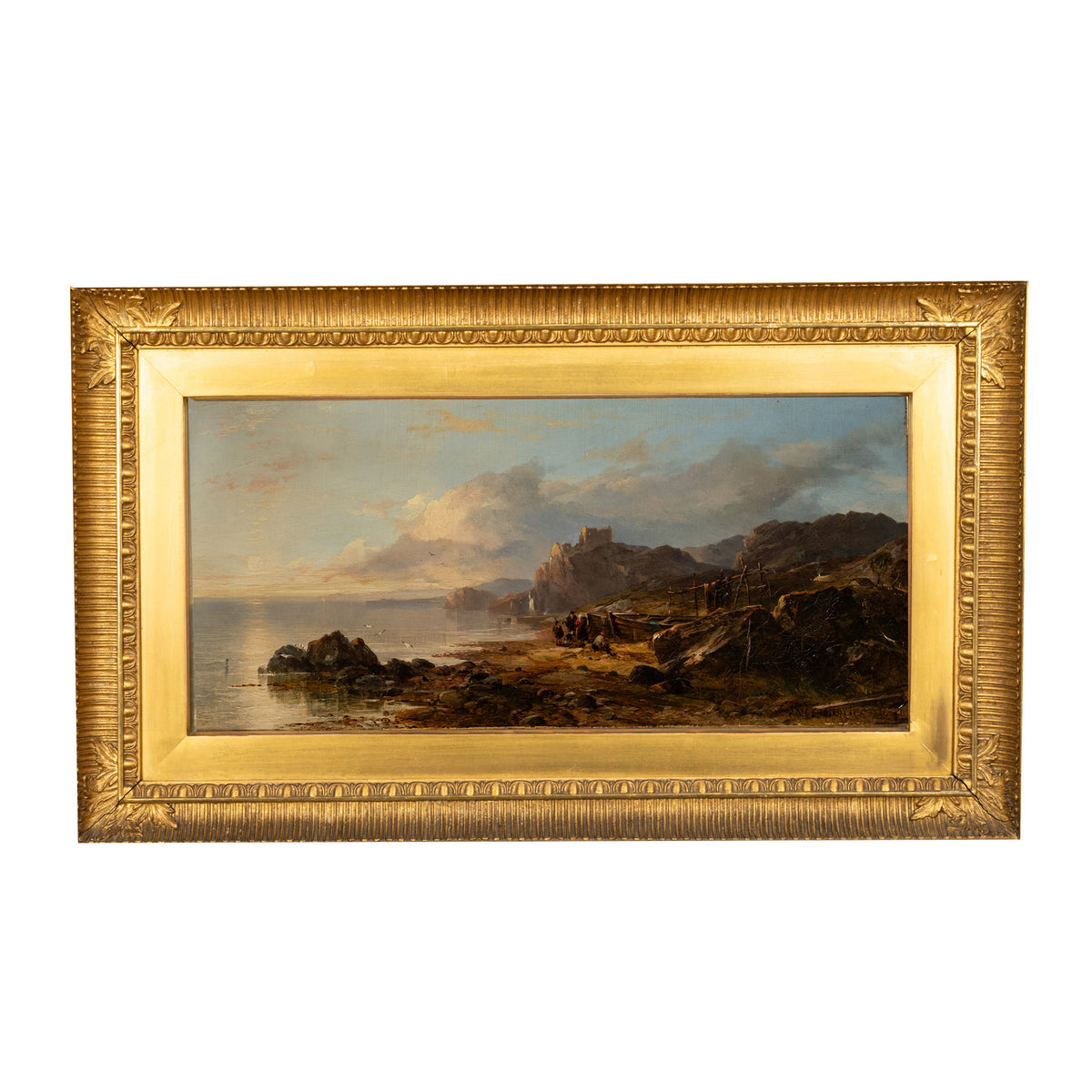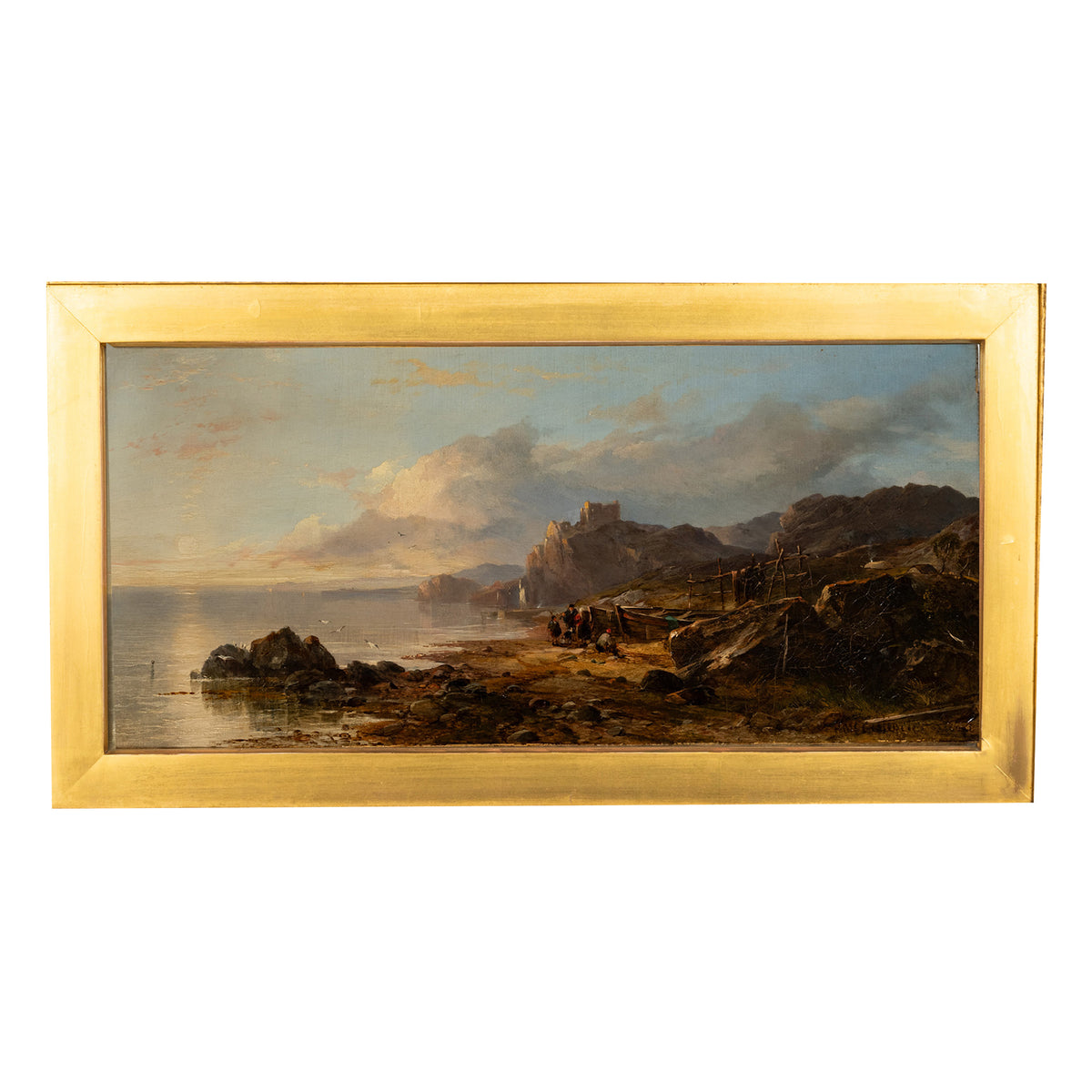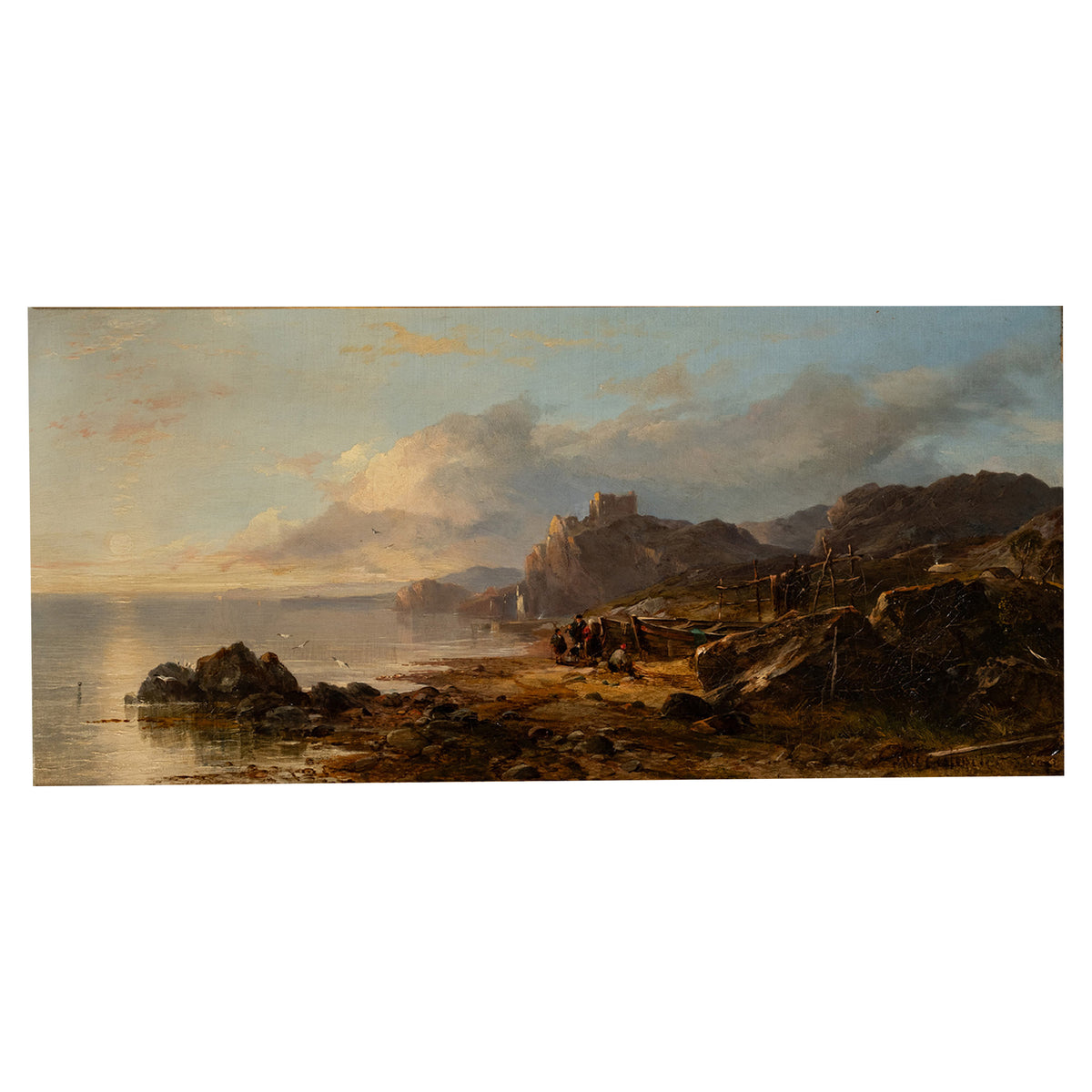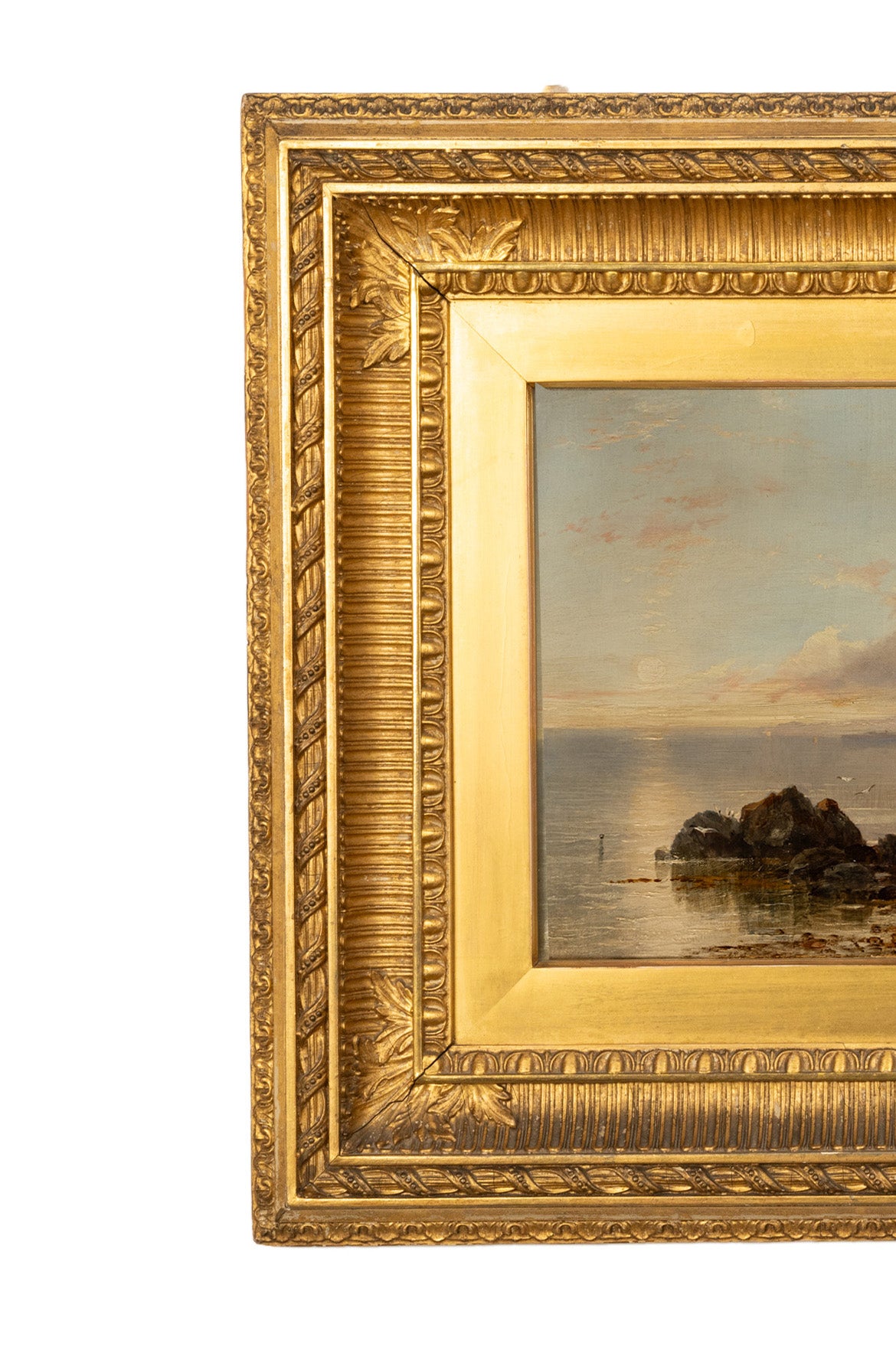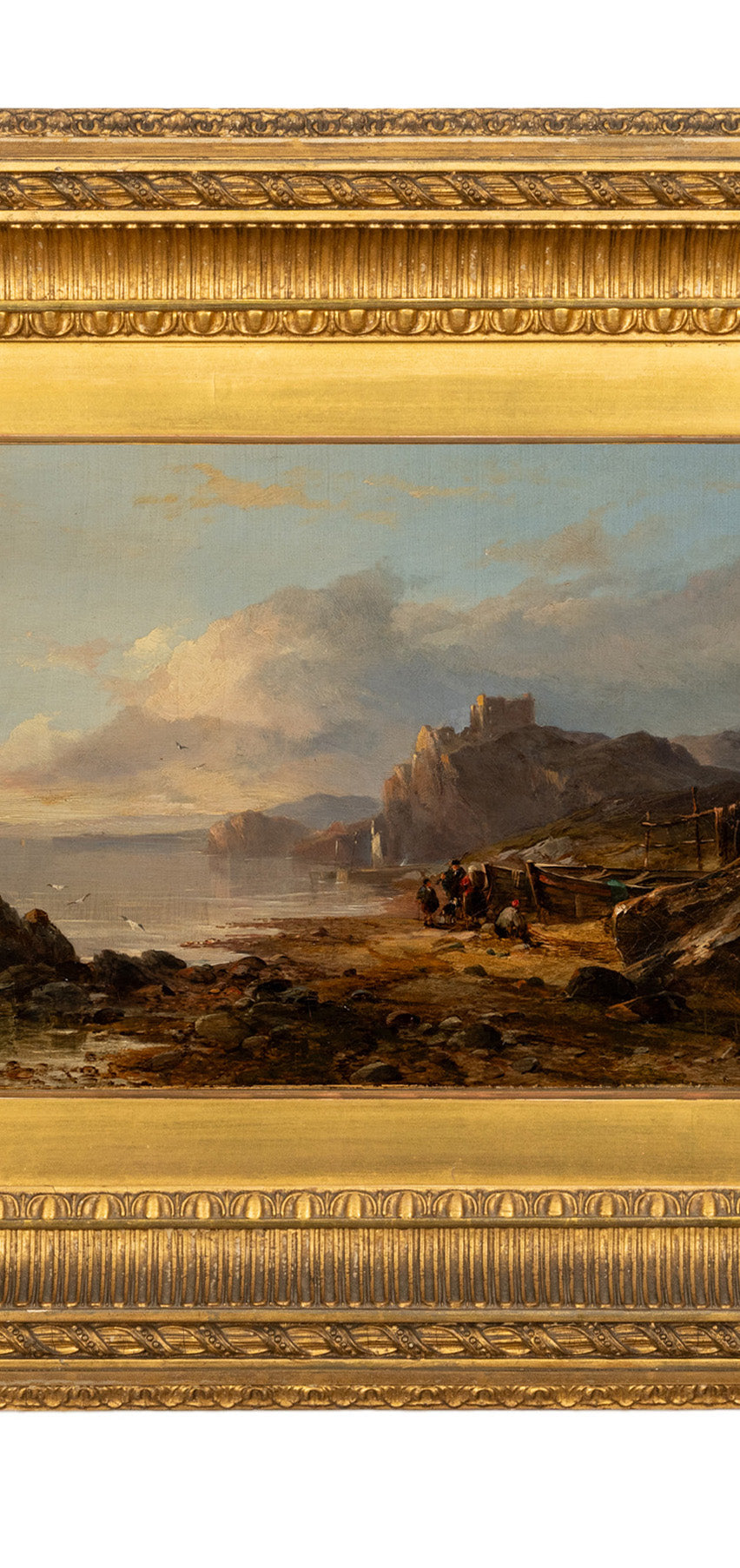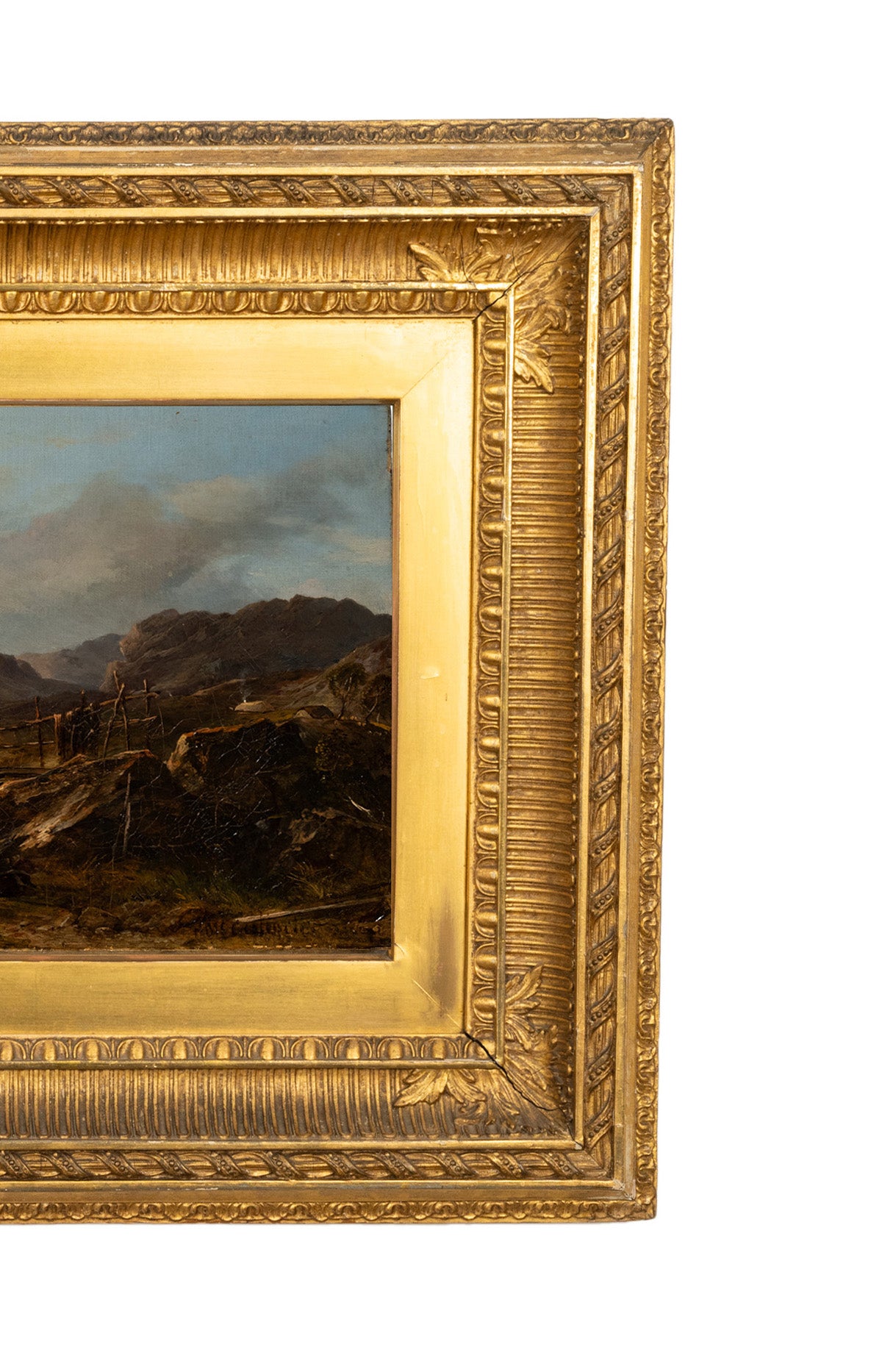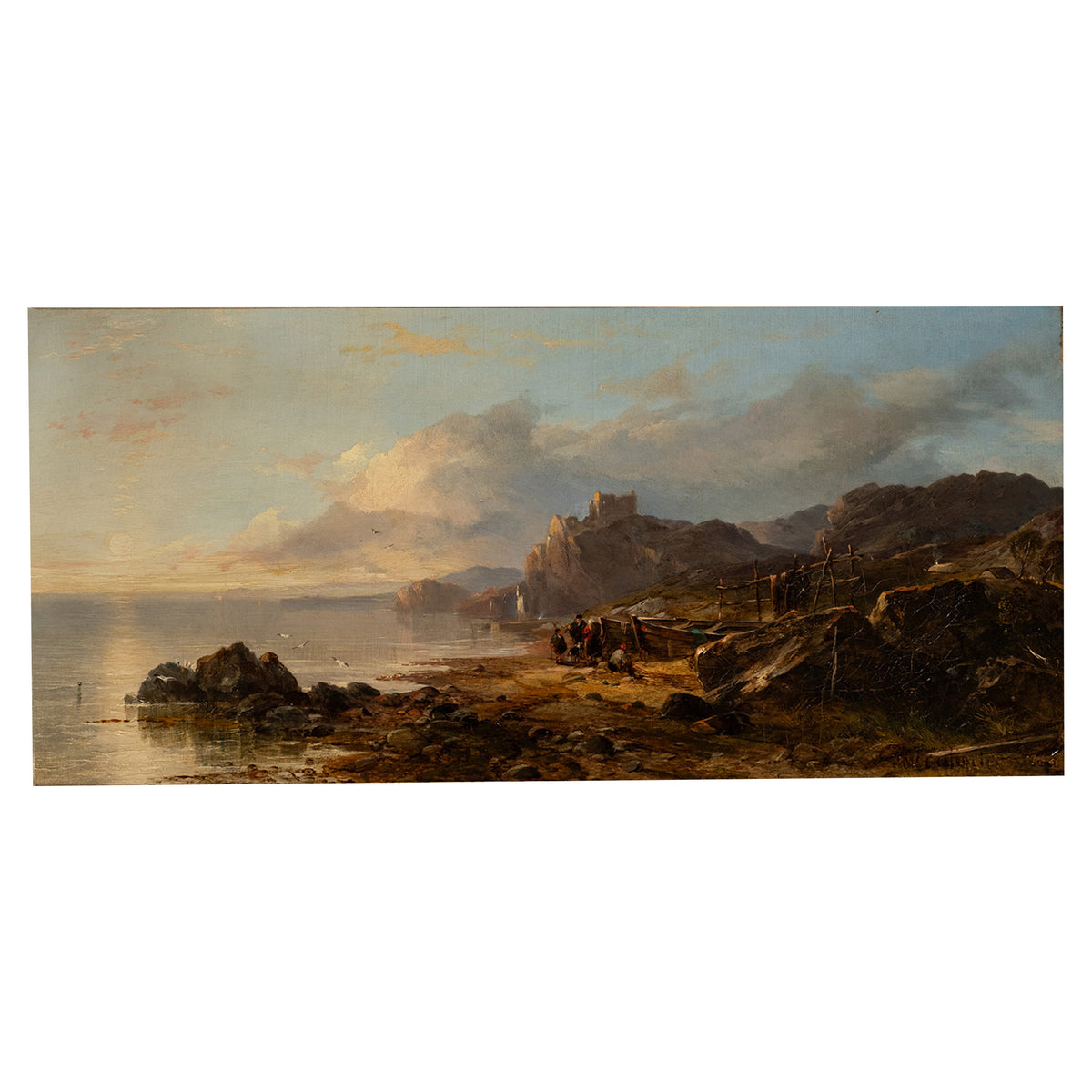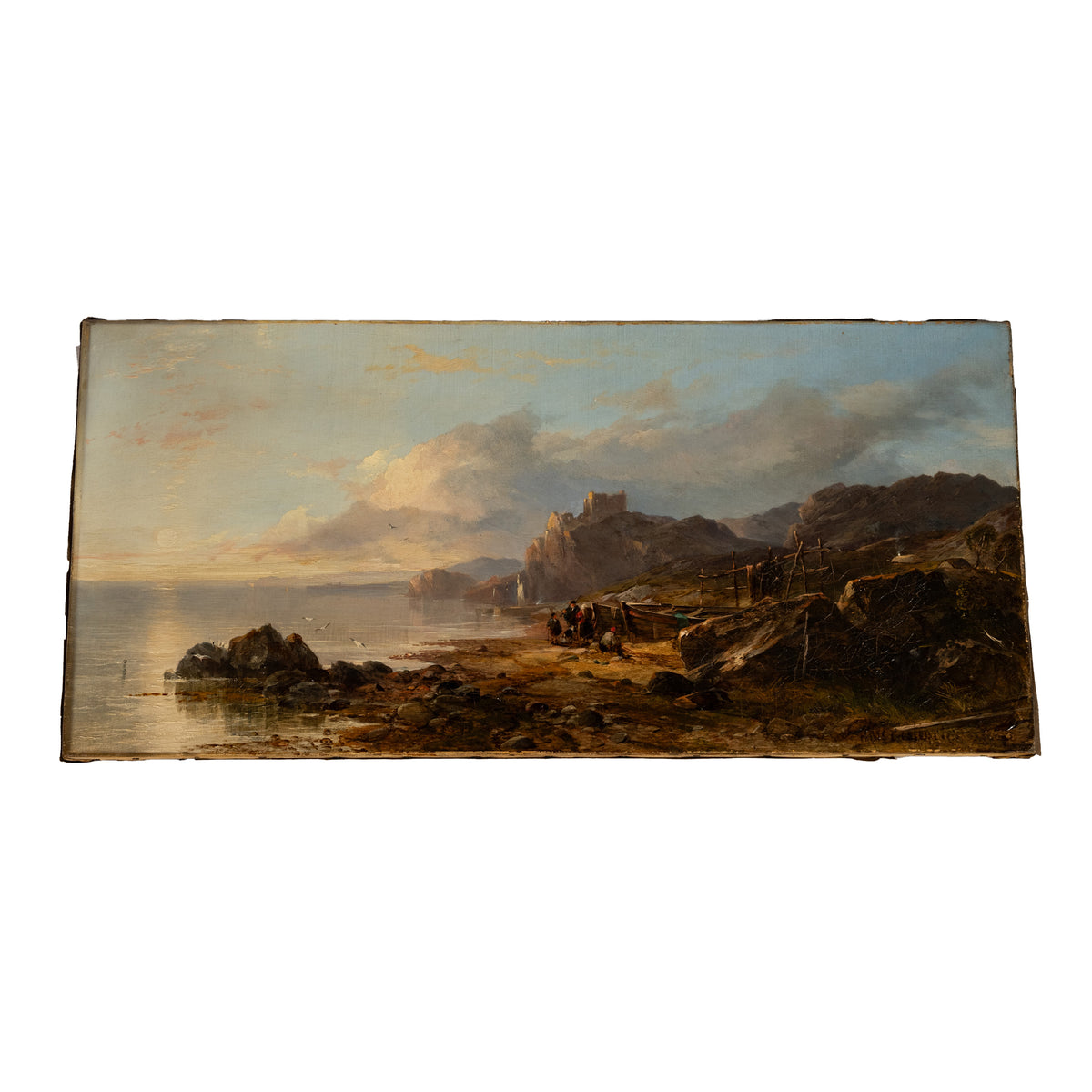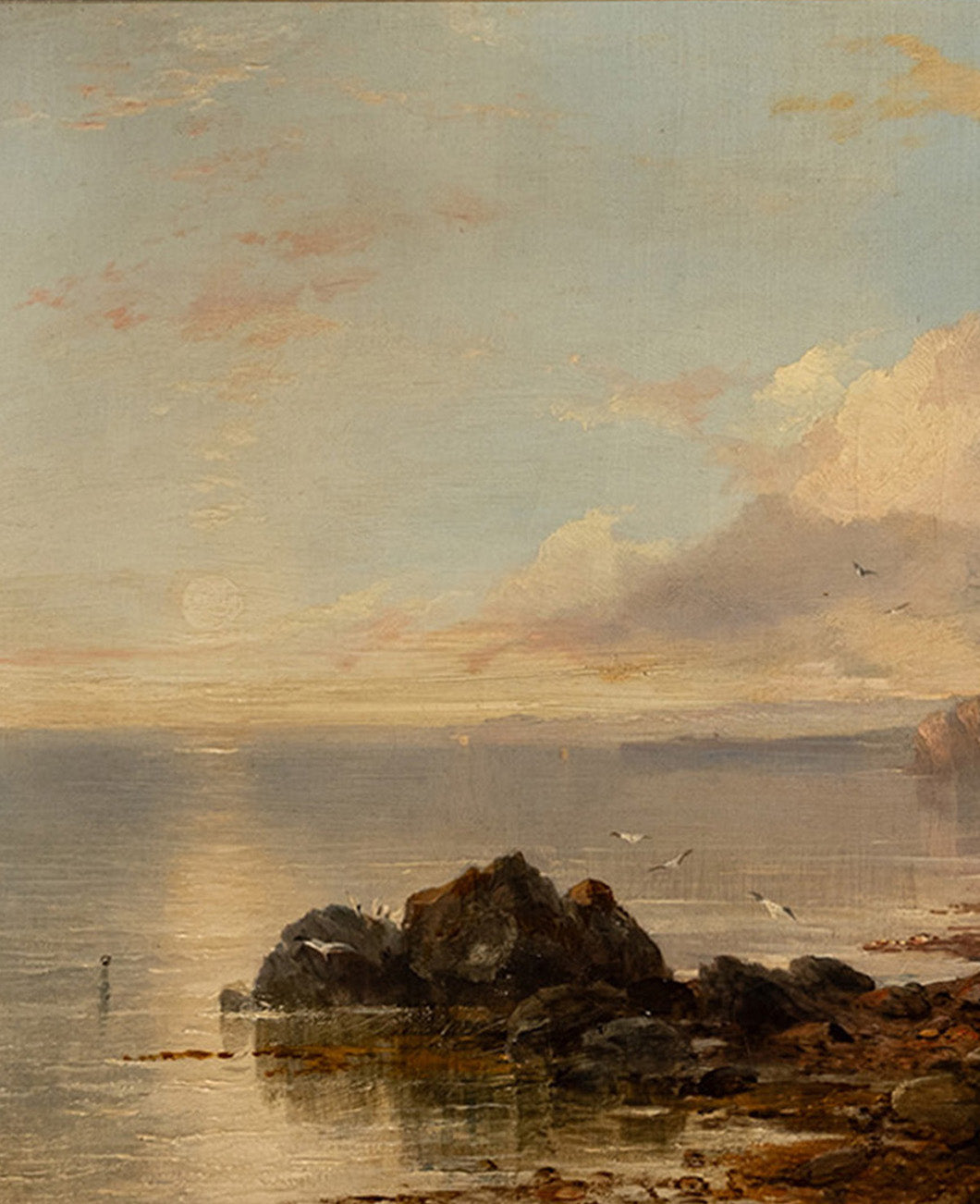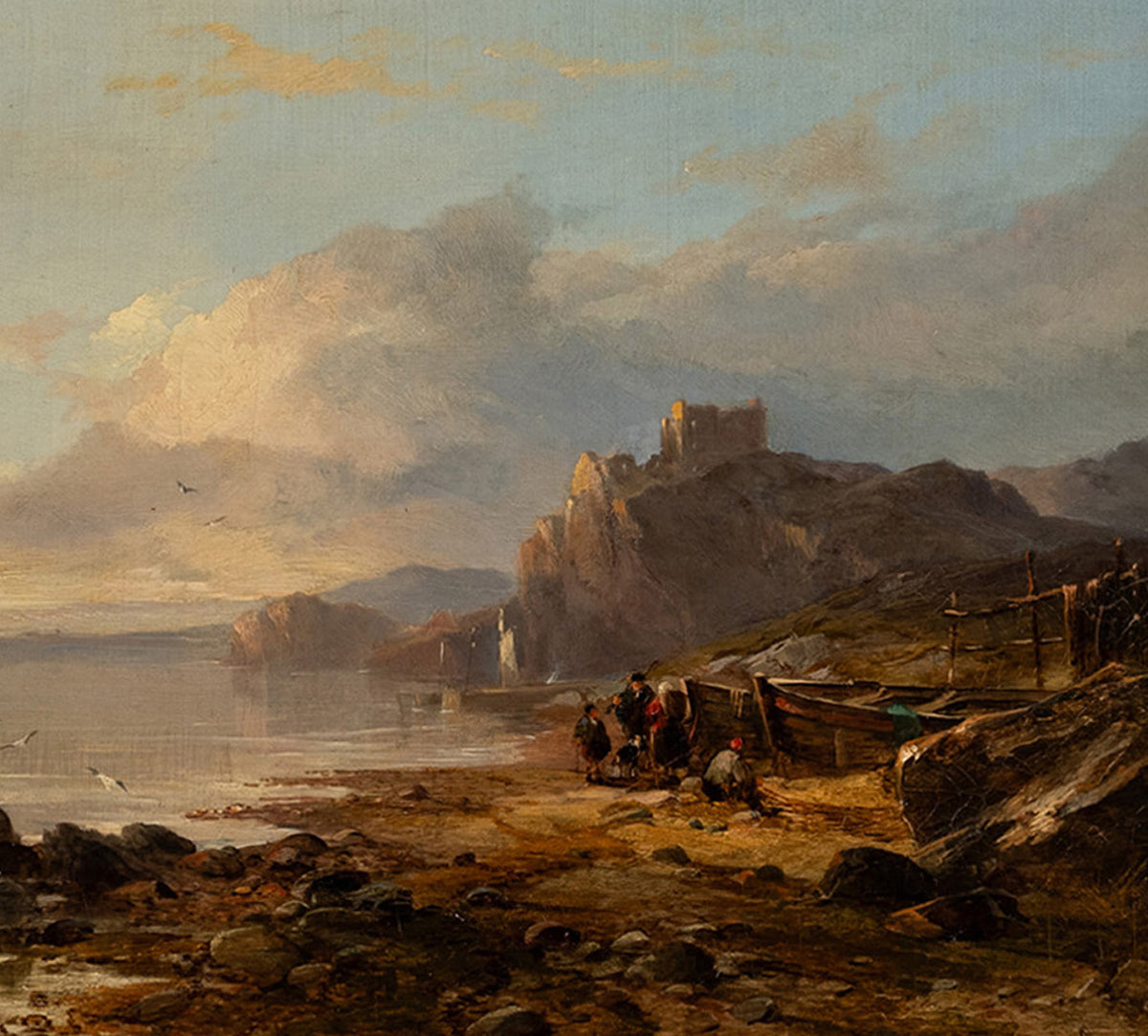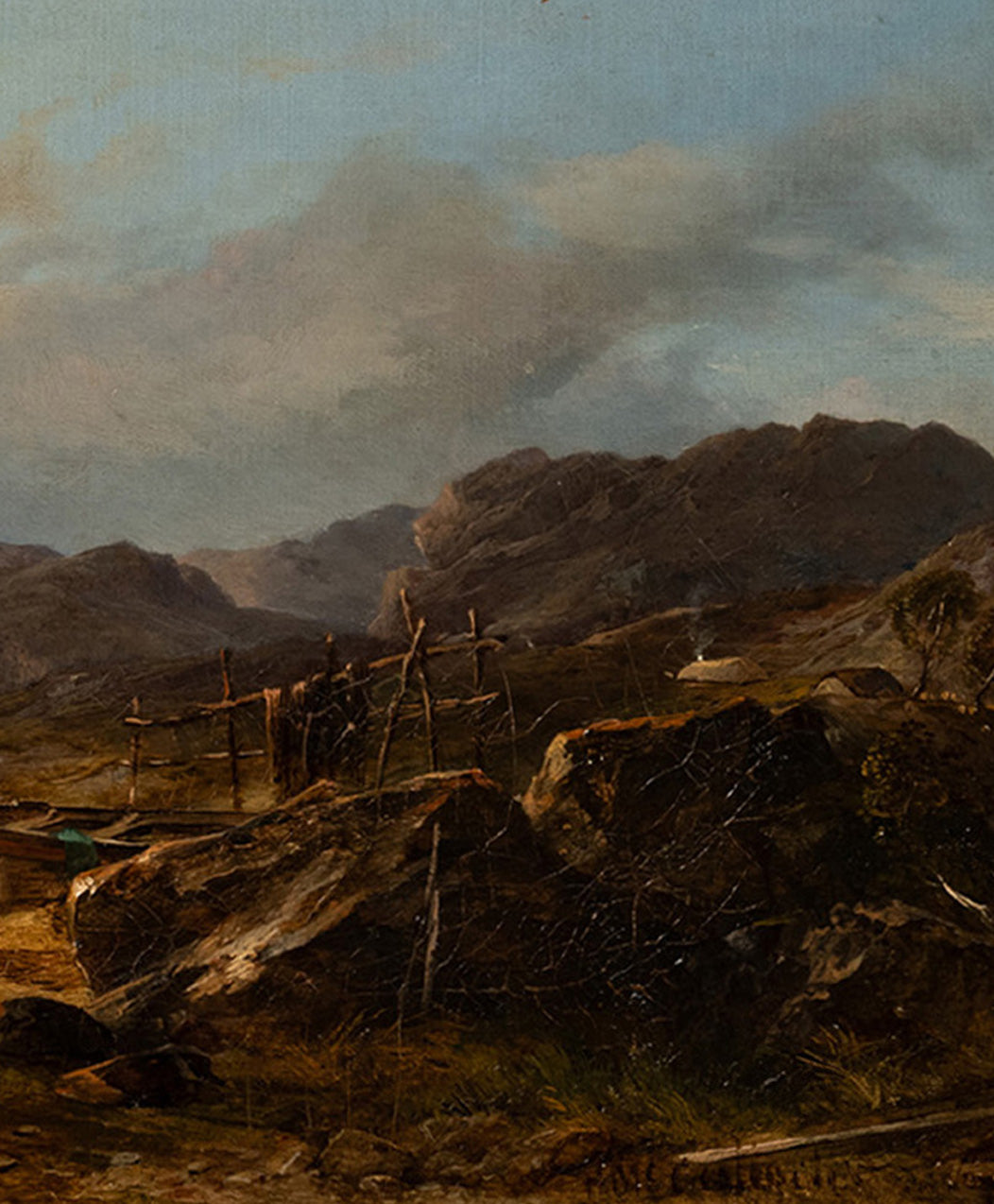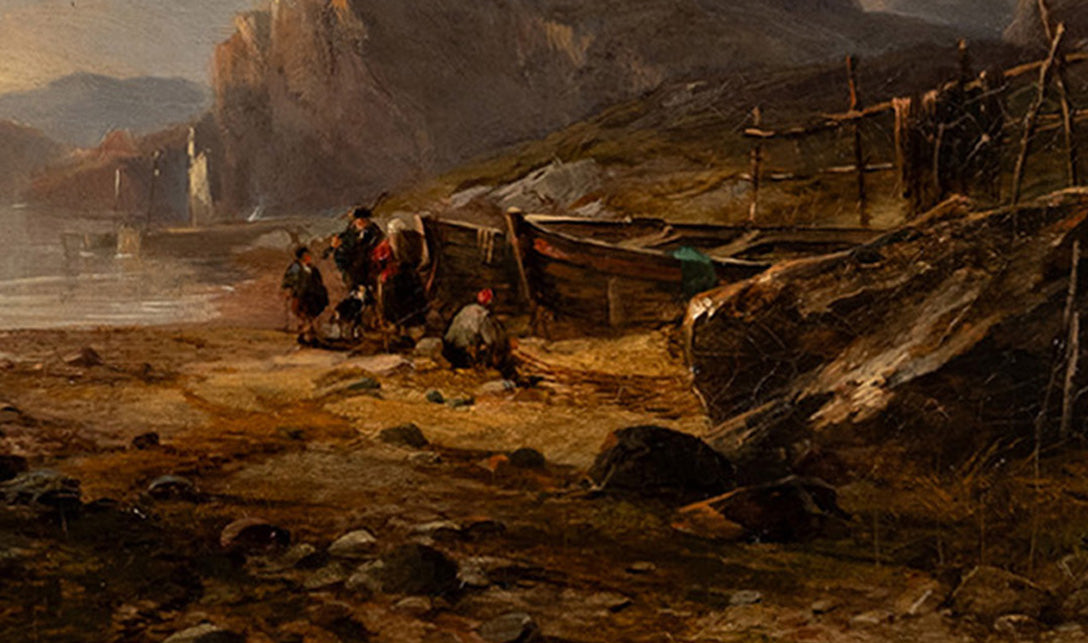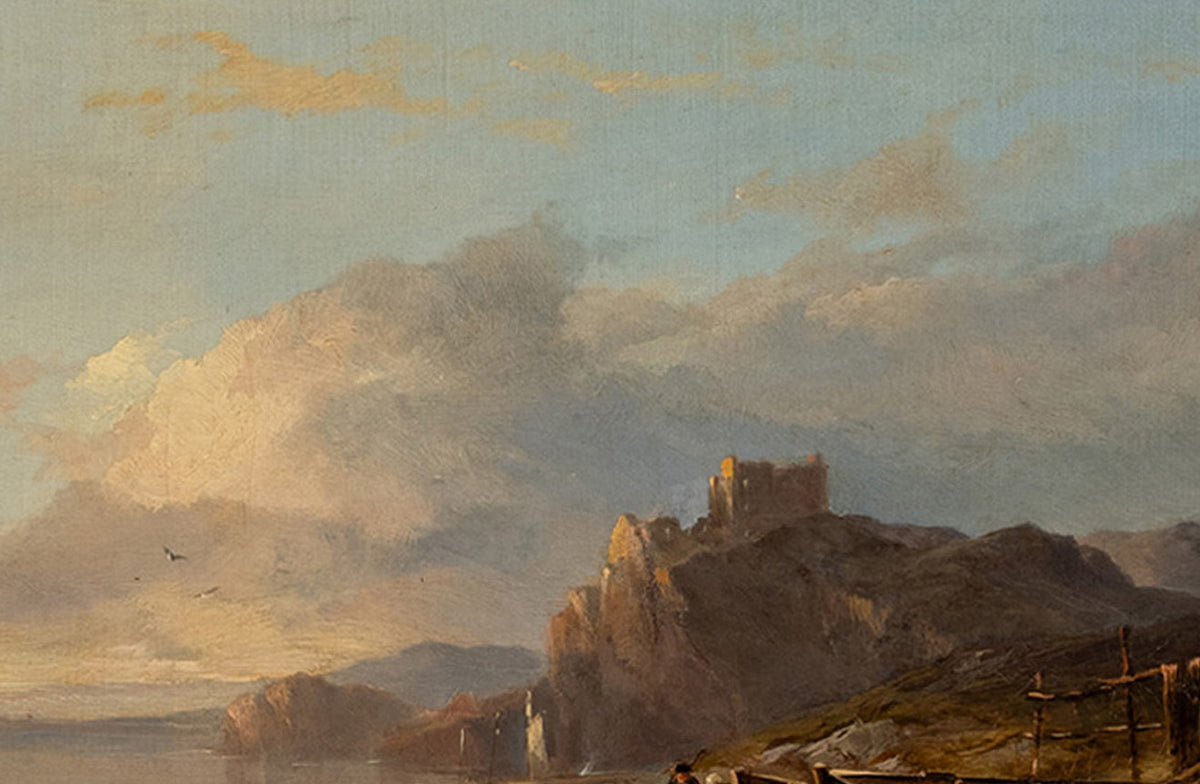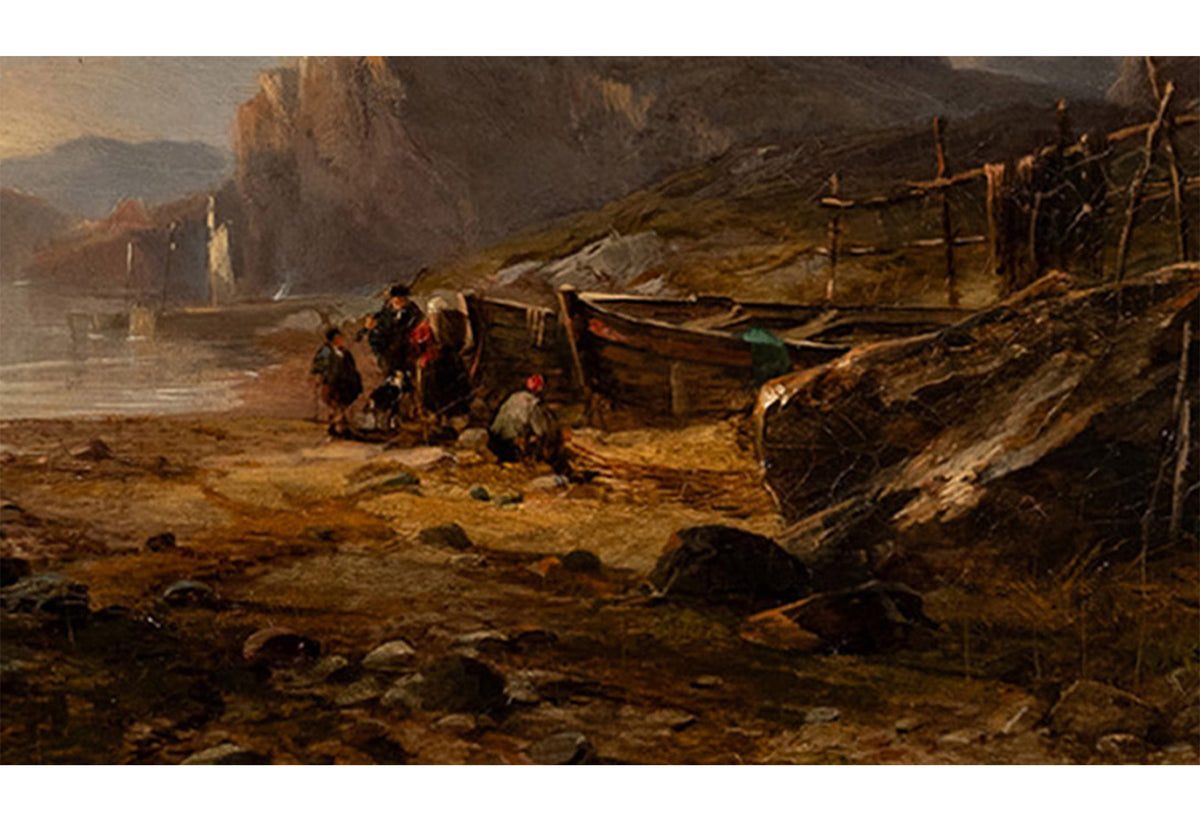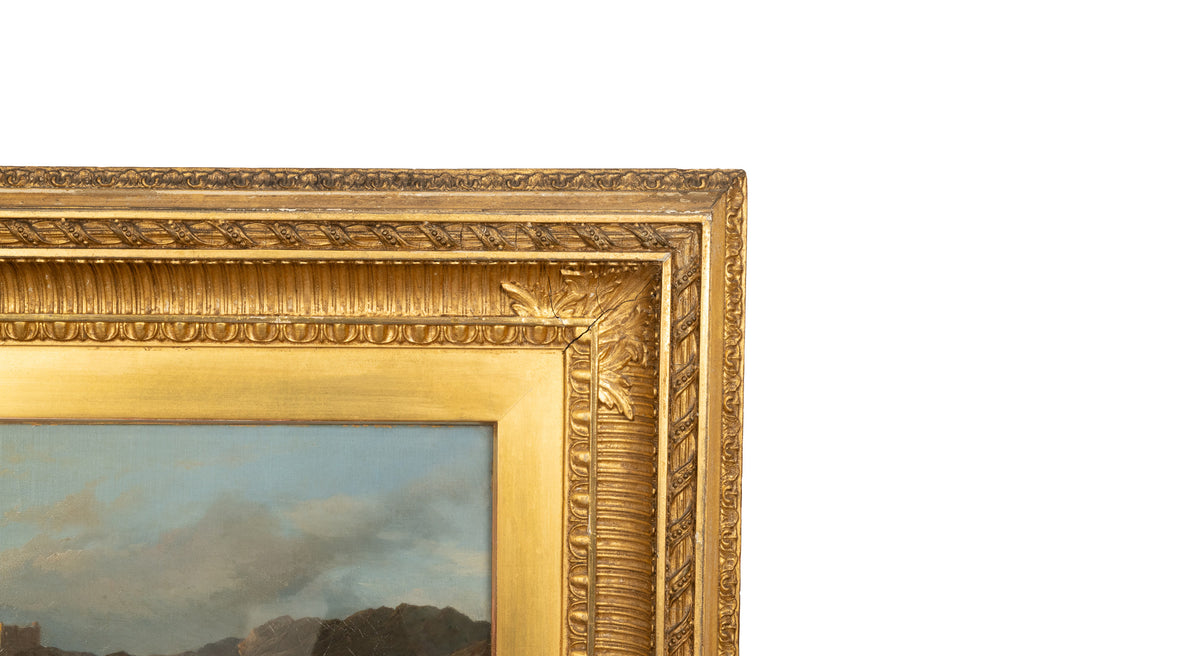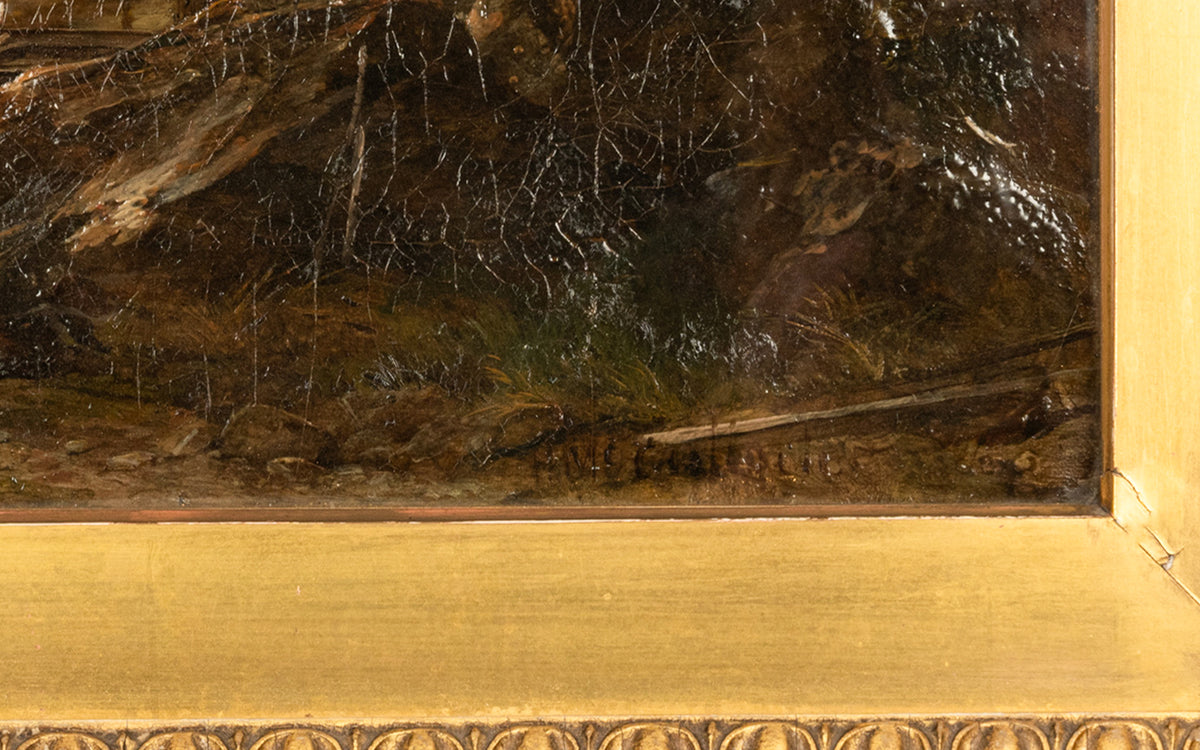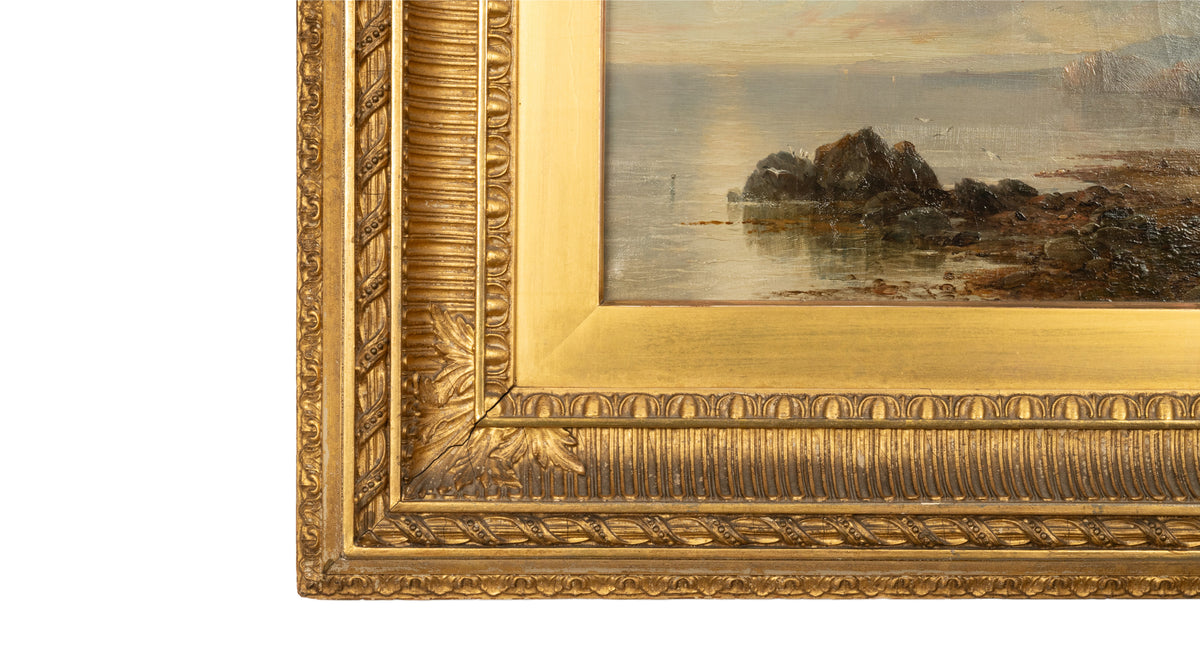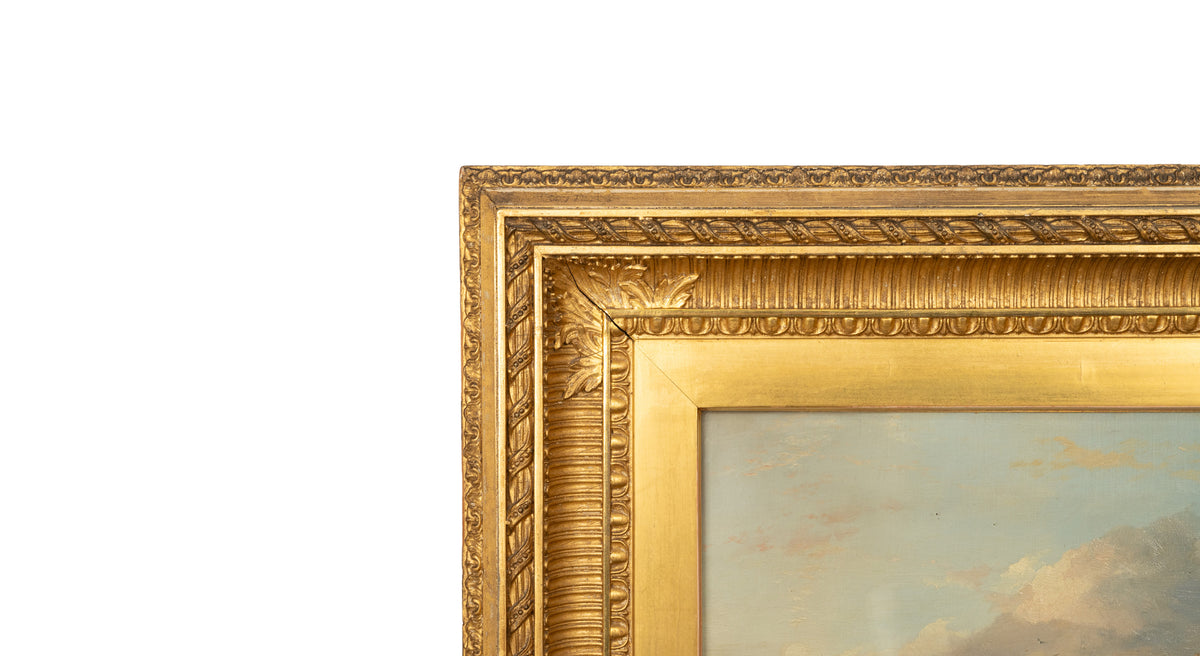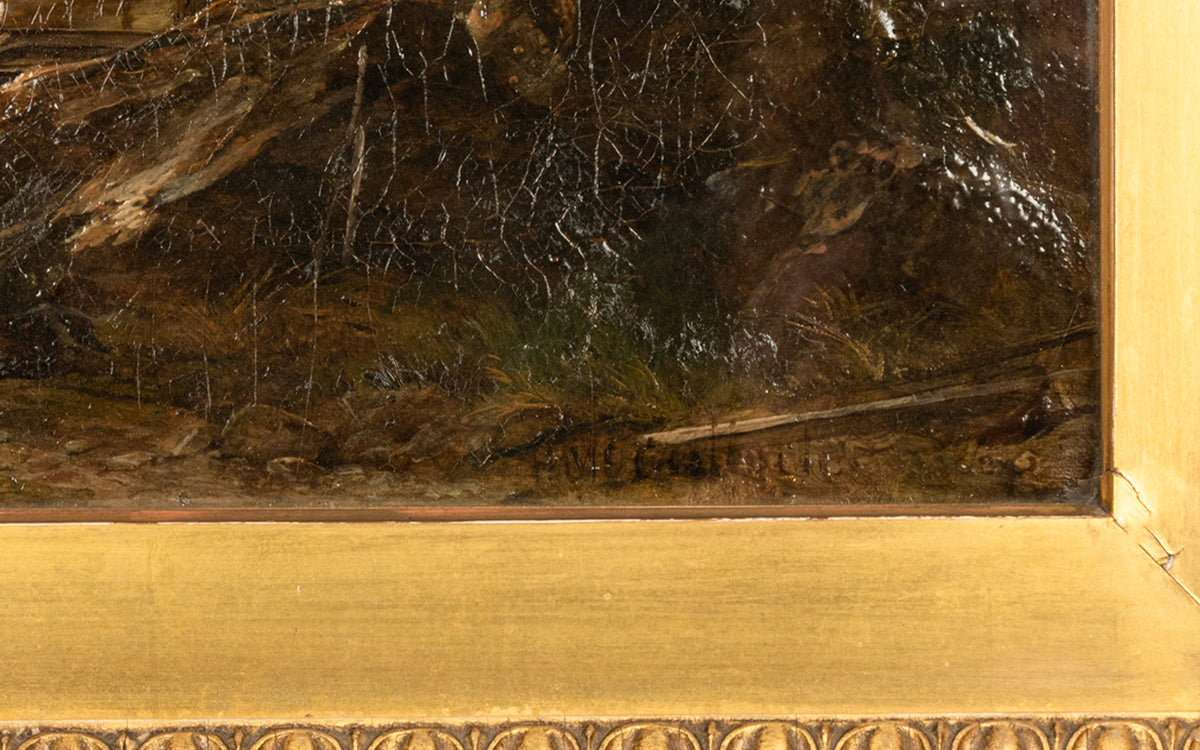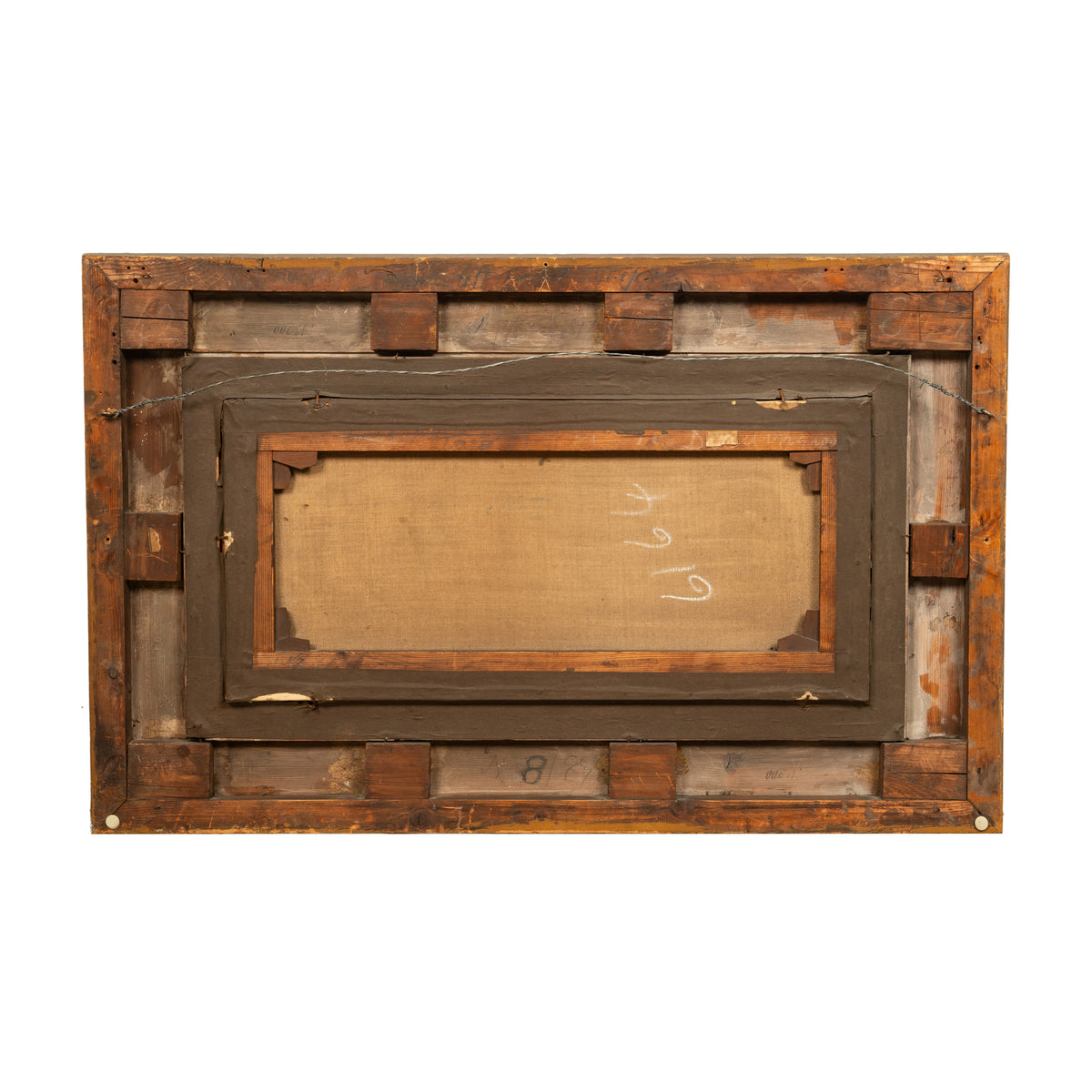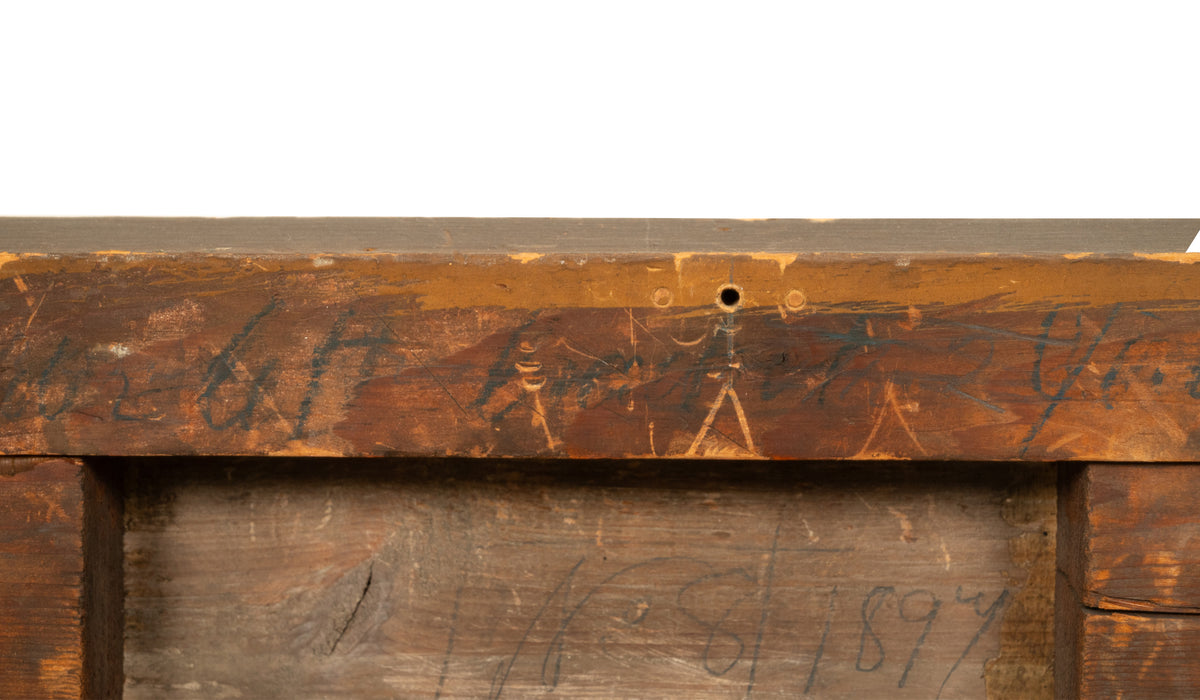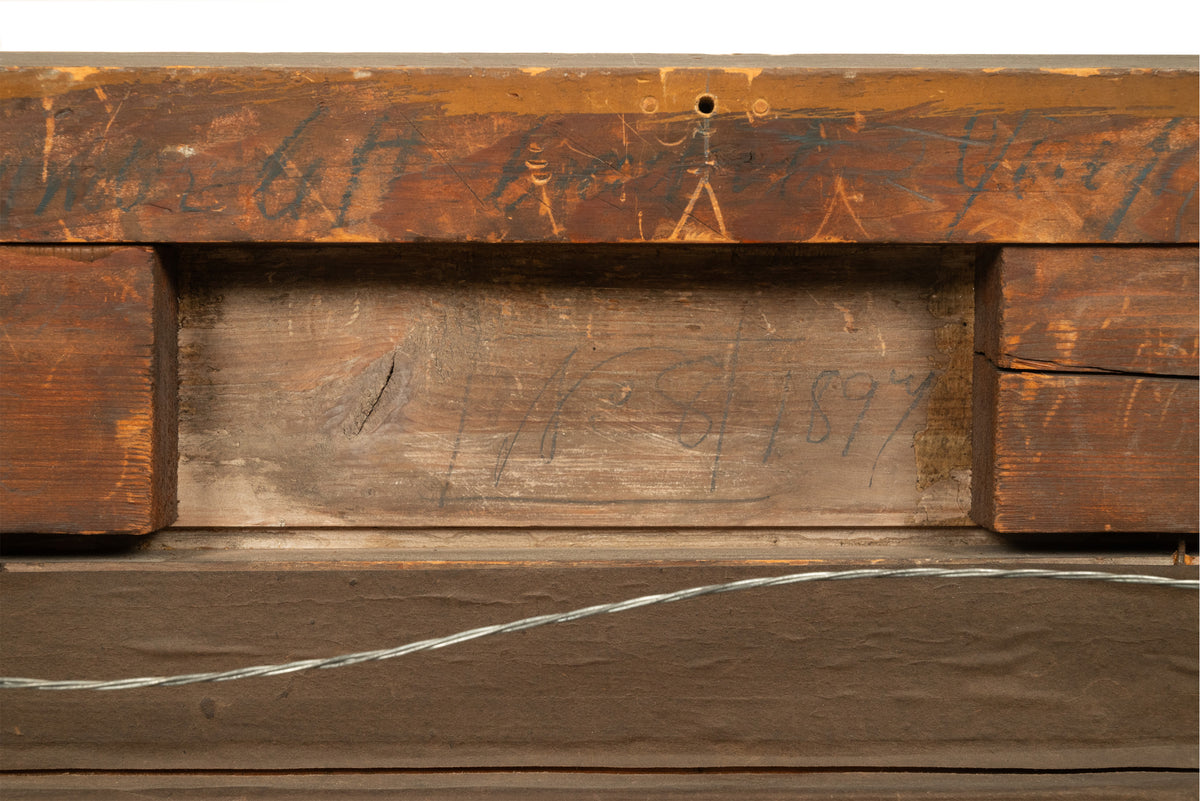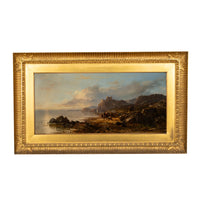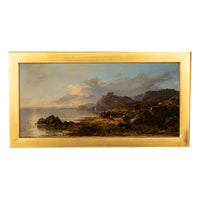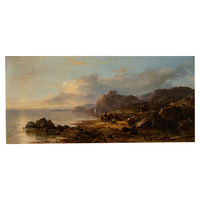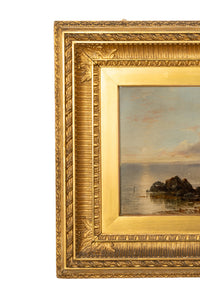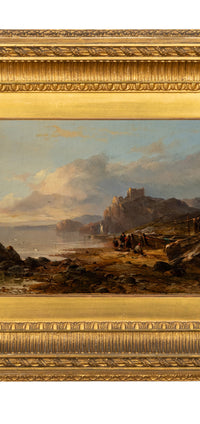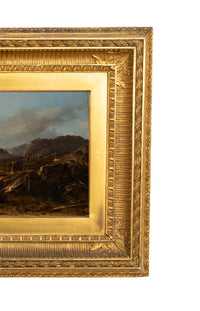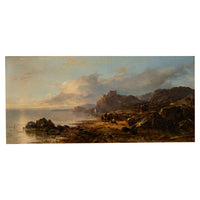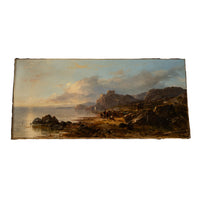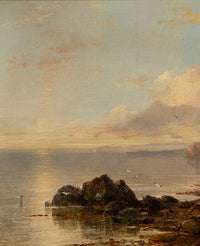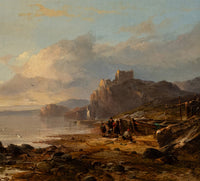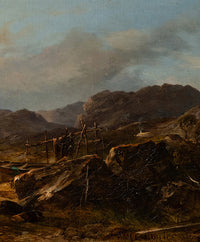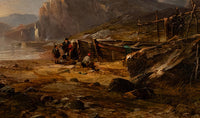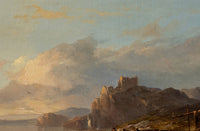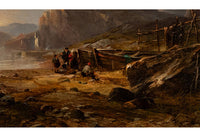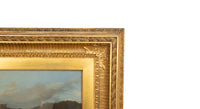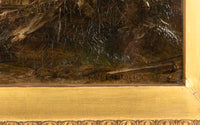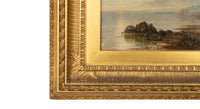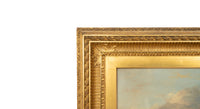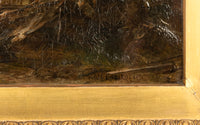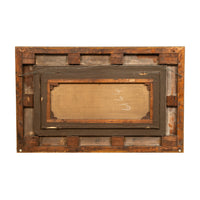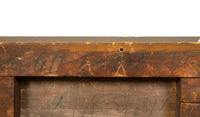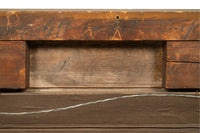Antique Scottish Oil on Canvas Painting Tantallon Castle Ruin East Lothian Horatio McCulloch 1850
- Regular
- $ 0
- Sale
- $ 0
- Regular
- Unit Price
- per
SOLD
A fine & important Scottish oil on canvas painting; a landscape of Tantallon Castle in East Lothian, by Horatio McCulloch (1805-1867) R.S.A. The painting circa 1850.
This very handsome painting of Tantallon castle in East Lothian, is a very fine example of a work by an artist that became the most successful Scottish landscape painter of his generation. The castle is depicted rising in the background with figures to the foreground in traditional Scottish plaid accompanied by a dog, also two fishing boats and cottages with smoke billowing from the chimney. This work is signed lower right, condition is very good and the painting is housed in the original gilded frame, which is also in very good condition.
Horatio McCulloch was trained in the studio of the Glasgow landscape painter John Knox (1778–1845) for about one year alongside Daniel Macnee (1806–1882). After he moved to Edinburgh in 1825, he began painting in the tradition of Alexander Nasmyth. Working unweariedly from nature, he was greatly influenced in his early practice by the watercolours of H. V. Williams. He returned to Glasgow in 1827, and was employed on several large pictures for the decoration of a public hall in St. George's Place, he style became a link between the old world of Scottish landscape and the new.
In 1829 McCulloch first figured in the Royal Scottish Academy's exhibition. (He was a regular exhibitor year by year afterwards.)By the early 1830s McCulloch’s exhibits with the Glasgow Dilettanti Society and with the Royal Scottish Academy had begun to attract buyers, notably the newly instituted Association for the Promotion of the Fine Arts in Scotland. A commission from Lord Provost James Lumsden helped established the artist's reputation within Scotland. Commissions from book and print publishers allowed him to concentrate on easel painting.
On his election as full Academician of the Scottish Academy in 1838, McCulloch settled in Edinburgh and soon became a prominent figure in the artistic life of the capital and a prolific contributor to the Royal Scottish Academy exhibitions. At the same time contact with Glasgow was maintained: McCulloch’s favorite sketching grounds were in the west, he exhibited regularly in the city and his most loyal patrons were wealthy Glasgow industrialists such as David Hutcheson (1799–1880), the steamship owner. He seldom exhibited outside Scotland and only once at the Royal Academy, London (1843), but he kept in touch with London artist–friends, John Phillip, David Roberts and John Wilson (1774–1855), through correspondence and visits. His own art collection was evidence of his admiration for 17th-century Dutch painters, for J. M. W. Turner and Richard Wilson and for contemporaries such as Clarkson Stanfield.
McCulloch's pupils included John Smart R.S.A., now best known for his early etchings of golf courses in Scotland. Another was James Alfred Aitken.
During his lifetime Horatio McCulloch became the best-known and most successful landscape painter in Scotland. His constant aim was to paint the silence of the Highland wilderness where the wild deer roam with the kind of poetic truthfulness he admired in Wordsworth.
At Sight
Width 24.25"
Height 11.25"
Depth .75"
Imperial
ches high × ches wide × ches deep
Metric
high × wide x deep
Displayed rates are for shipping in the Continental U.S. and Canada. For other locations, kindly contact us and we will provide the most competitive shipping price available. All shipments are professionally packed and shipped insured with full tracking capabilities. Customers are also welcome to collect their items from our warehouses or arrange their own shipping.

